

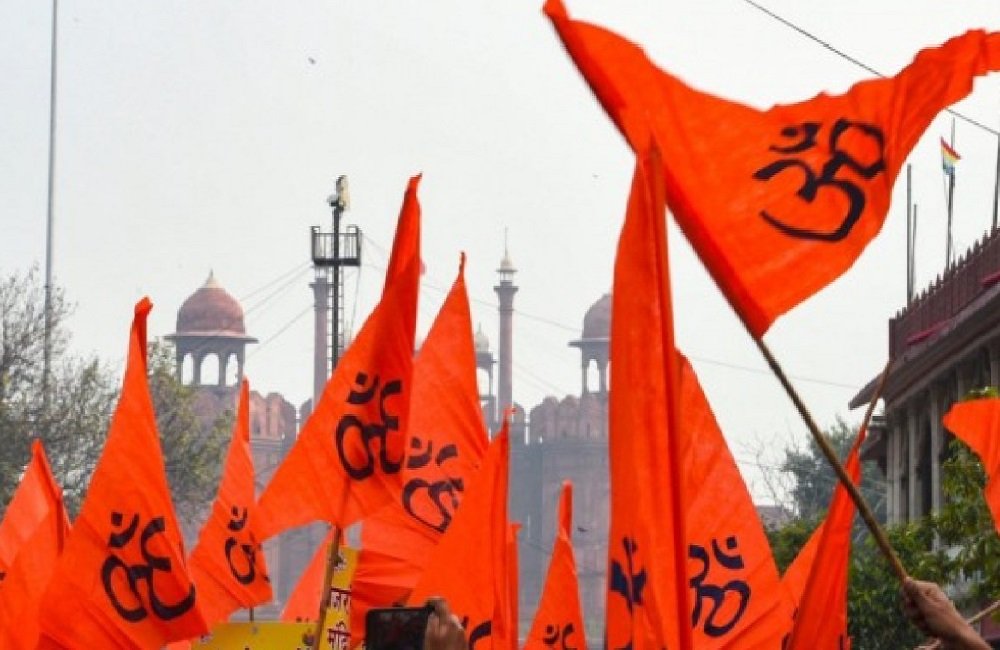
From this year, the same idol of Ramlala which is going to be established in Shri Ram temple Ayodhya will be worshiped in the camp of Vishwa Hindu Parishad set up in the parade ground of Magh Mela. Since 2001, a model of Ram Temple was kept in the VHP camp, which was the main center of the Ram Mandir movement, for the devotees to see. However, after the construction of Ram temple in Ayodhya started, the tradition of keeping the model was stopped since last year. This was also done because the temple under construction has one main and five sub-shikharas whereas the model had only three shikharas. The idol worship of Ramlala is going to start from this year which will continue in the coming years. On the advice of prominent saints and the then president of Ram Janmabhoomi Nyas, Paramhans Das, VHP President Ashok Singhal had prepared a model of the temple from an architect living in Sompura, Gujarat and started keeping it for darshan in Magh and Kumbh Mela. The saints had decided that this model would continue to be worshiped until a grand temple of Lord Ram was built in Ayodhya and the idol was established. People from all over the world come to Tirtha Kshetra Sangam, whose sentiments will remain connected to this movement through the model of Ram Temple. According to Nitin, Organization Minister of VHP Kashi Province, on January 22, when the deity of Lord Ram is being consecrated in Ayodhya, the idol of Ramlala will be worshiped in the VHP camp located at Magh Mela. The camp will be decorated in a grand manner like Kumbh. A large number of saints, workers and Ram devotees will be present on 22 January. Prasad will be distributed after bhajan, kirtan and aarti. Before that, from the day of Makar Sankranti itself, the invitation for the consecration of the idol will be given from the camp through the distribution of worshiped Akshat.
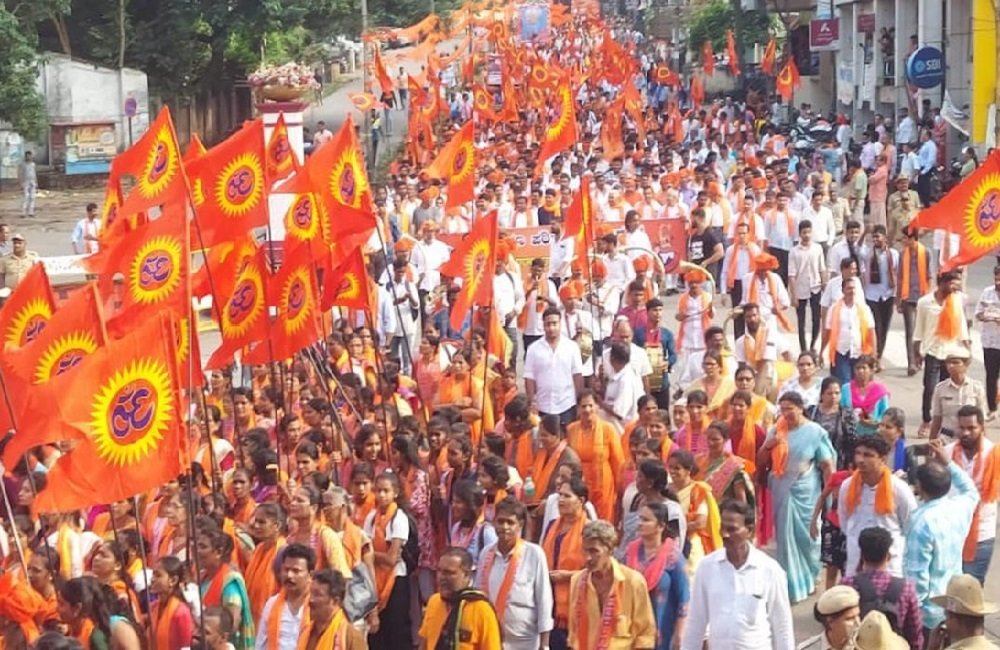
In the three and a half decade long movement for the temple at Shri Ram Janmabhoomi in Ayodhya, the most discussed word has been 'Kar Seva'. On the call of Ashok Sinhal, who was leading the Vishwa Hindu Parishad under the guidance of saints, lakhs of youth had set out to do Kar Seva, risking their lives. The origin of this word car service also has an interesting story. Actually the root word of car service is work service. As soon as the word 'work service' got corrupted it became 'car service'. The word Karya Seva was used to connect all religions and faiths for cooperation in the movement. During the 1989 Sant Sammelan held in the presence of Devraha Baba in Prayagraj, the saints made it clear that the temple of Lord Shri Ram will be built on the birthplace only. The temple will not be accepted anywhere else except the place where Lord Shri Ramlala is being worshipped. With this the call for work service was given. The saints were of the opinion that all religions are connected with Ayodhya, hence everyone will have to move ahead in this movement. In this, a strategy was made to seek cooperation from everyone in the name of work service. It was decided in Prayagraj that after Diwali in 1990, 5000 employees from across the country would head towards Ayodhya on a fixed date and in a fixed number. The Karya Sevaks were instructed to arrest them peacefully without clashing with the police if there is any obstruction in the service in the interest of reconstruction of Shri Ram Temple in Ayodhya on 30 October 1990. For work servants from other states, the route to Uttar Pradesh was decided only through eight places including Gorakhpur, Varanasi, Jhansi, Agra, Mathura, Ghaziabad, Saharanpur. According to VHP Metropolitan President Sanjay Gupta, the biggest center among these eight centers was Prayagraj where lakhs of people were staying at various places. A strategy was also made in Prayagraj to contact the politicians. Mahant Avaidyanath Maharaj Gorakhpur, Mahant Nritya Gopal Das Ayodhya, Gopal Maharaj Prayag, Mahesh Anand Vrindavan, Rameshwar Das Kashi, Chinmayanand Haridwar, Ramanujacharya Vasudevacharya Ayodhya, Omkaranand and Swami Parmanand Haridwar were included in the Santark Committee.
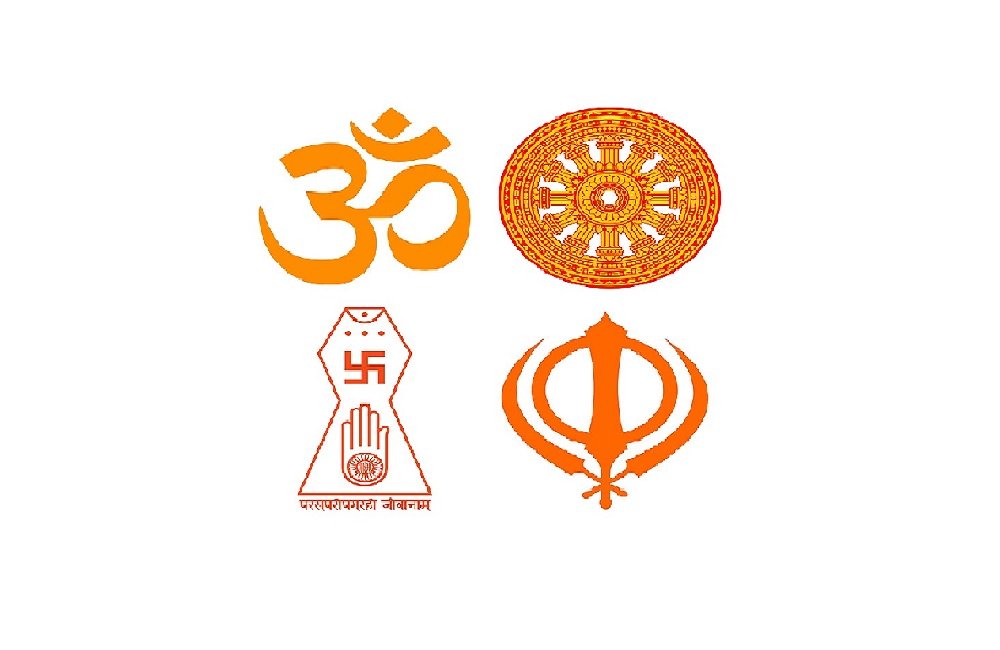
Ayodhya is the birthplace of the five Tirthankaras of Jainism, Adinath, Ajit Nath, Abhinandan Nath, Sumit Nath and Anantnath. According to the ancient Buddhist text Deepavansh, Lord Buddha spent 16 years of Chaturmas in Ayodhya. Talking about Sikhism, when Guru Nanak Dev came to Ayodhya, he first visited Ram temple. Shri Guru Teg Bahadur also stayed in Ayodhya. When Shri Govind Singh was returning from Patna Sahib, he stayed in Ayodhya and two Gurudwaras, Nazar Bagh and Brahmakund, were built there, in which the memories of the above three Gurus have been preserved. That is why the collaboration was named Karya Seva to enable all castes, creeds, creeds and sects to join the Ram Janmabhoomi Mukti Movement.
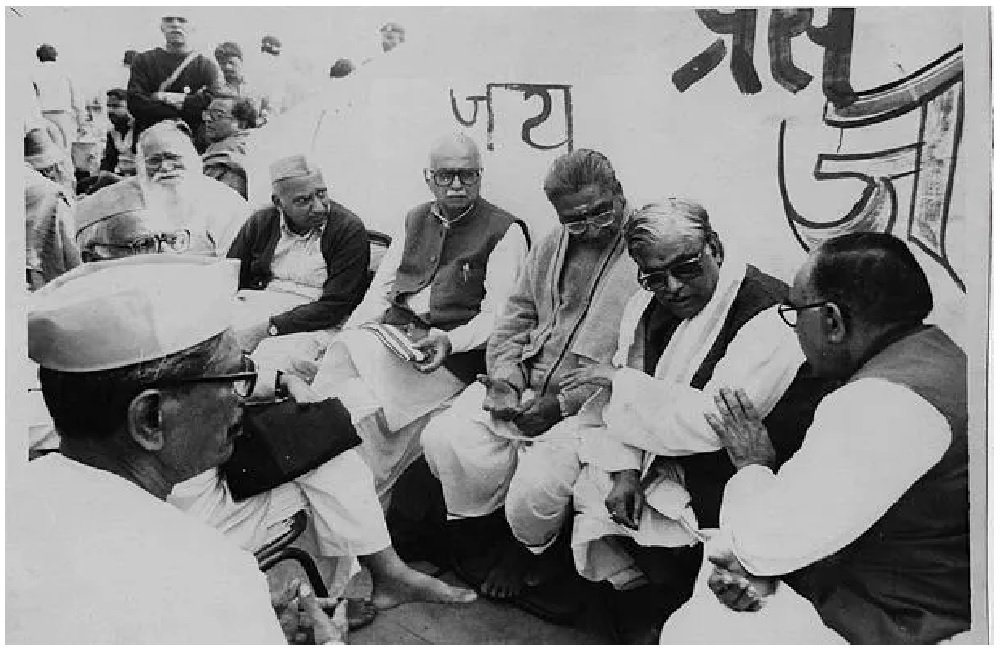
Before the consecration of the new idol of Ram Lalla in Ayodhya on January 22, important events of the temple movement are also becoming fresh in the memory. The Parliament of Religions organized in the camp of Vishwa Hindu Parishad during the 2002 Kumbh in Prayagraj played an important role in the movement. In other words, the spark of the temple movement in 1989 became a flame in the Parliament of Religions organized in the Kumbh of 2002. The decisive movement was decided in the Parliament of Religions held from 19 to 21 January 2002 on the sands of Sangam. Six thousand saints gathered in the Parliament announced that the Central Government should immediately remove all the obstacles coming in the way of construction of Shri Ram Janmabhoomi temple, otherwise the construction work of the temple will be started from any auspicious day after Shivratri (12 March 2002). For this campaign, with a view to create spiritual energy, awaken Hindutva and speed up the work of temple construction, three programs were organized - Jala Abhishek of Lord Shankar in Purushottam month, chanting of Vijay Mahamantra and Sant Sarkar Yatra from Ayodhya to Delhi. The announcement was made. According to Nitin, Organization Minister of VHP Kashi Province, Sant Varna Yatra started from Ayodhya on 26 January 2002. It was estimated that 500 saints would participate in the yatra, but at the time of the beginning of the yatra, 1300 saints had gathered. Holding big public meetings in Ayodhya, Lucknow and Kanpur, the Yatra passed through Etawah, Agra, Aligarh, Bulandshahr and reached Delhi on 27 January 2002. A Mahakumbh of 7500 saints from across the country was organized. The meeting in Delhi was also historic in which more than 1.5 lakh people were present. During the Sant Yatra, it seemed as if the 1990-like Shri Ram Janmabhoomi movement had been re-established. At that time, 90 crore Hindus were led by many prominent saints including Swami Vasudevananda Saraswati, Swami Divyananda, Ramanujacharya Vasudevacharya, Jagadguru Rambhadracharya, Madhvacharya Vishvesh Tirtha, Ramchandra Das Paramahamsa and Swami Vedanath.
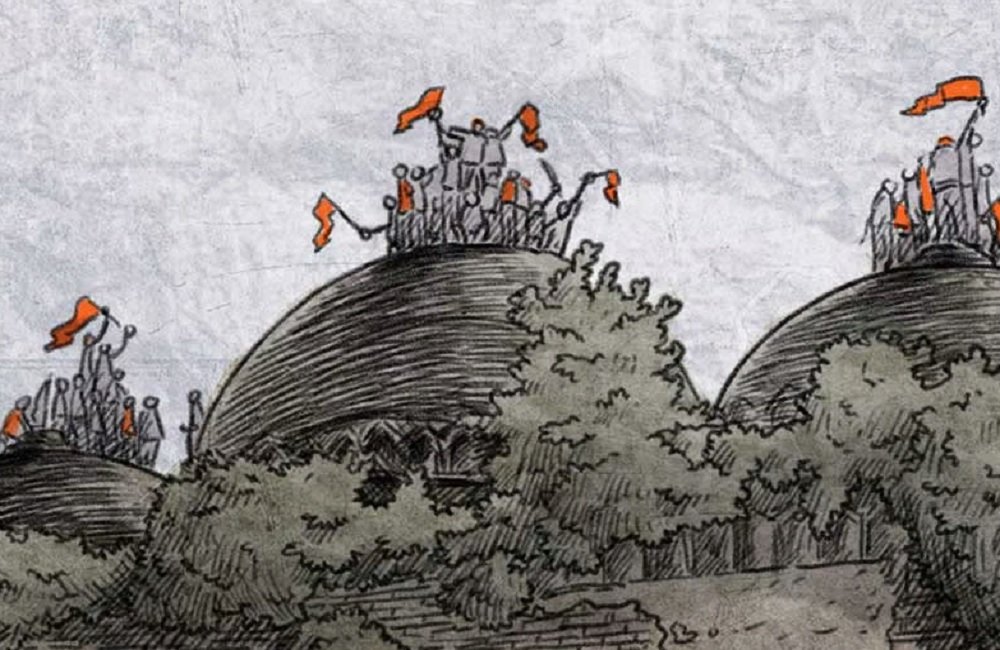
The biggest conflict during the Ram Mandir movement in Ayodhya took place on November 2, 1990. The 22 Ram devotees martyred by police bullets found salvation only at the confluence of Ganga-Yamuna and invisible Saraswati. Prominent saints had immersed the ashes of all 22 martyred Ram devotees in Prayagraj on 14 January 1991, on the day of Makar Sankranti. In 1989, it was decided in the Kumbh of Prayagraj that after Diwali on 18 October 1990, 5000 workers from across the country would head towards Ayodhya. As a result of which there was a tremendous conflict in Ayodhya for 18 days from 21 October to 7 November 1990. On the call of saints and VHP, groups of Kar Sevaks from different states were marching towards Ayodhya and all kinds of restrictions were being imposed to stop them. In Ayodhya, raids were conducted on the ashram of Mahant Nritya Gopal Das, Vice President of Shri Ram Janmabhoomi Mukti Yagya Committee. Karya Sevaks were being caught and imprisoned. The foundation stone laying site of Shri Ram Janmabhoomi temple was completely sealed. The then government leader of Rashtriya Swayamsevak Sangh, Prof. Rajendra Singh Rajju Bhaiya was arrested in Lucknow itself. As the date of 30th October for Kar Seva was approaching, the repressive action of the administration was intensifying and the enthusiasm of the workers was increasing. Prayagraj remained closed for two consecutive days in protest against the arrest of Swami Vasudevanand and Ram devotees. Former Allahabad High Court judge Jagmohan Lal Sinha sent a letter to the President, expressing concern over the ongoing government terrorism and violation of civil rights in Prayagraj, seeking his intervention. On October 30, 1990, on the day of Devasthan Ekadashi, prominent people like Ramdev, Mahant Nritya Gopal Das, Ashok Singhal, Shrish Chand Dixit etc. reached Ramdas's cantonment in Ayodhya. From there, under his leadership, a procession of 20 thousand Kar Sevaks and devotees reached Janmabhoomi, first paid obeisance to the idol of God and then 'Kar Seva' i.e. demolition started at the disputed site. First the two outside doors, then the windows and some part of the wall were broken. On October 31 and November 1, paramilitary forces were evacuating Ayodhya. Still, about 40 to 50 thousand kar sevaks were engaged in kar seva. In the meeting held at Mani Ramdas Cantonment on November 1, it was decided that with do or die, we will march towards Shri Ram's birthplace. 16 sadhus started a fast unto death and said that if Kar Seva is not started then they will commit suicide. On November 2, the day of Kartik Purnima, the state government opened indiscriminate firing on Ram devotees in which 22 Ram devotees were martyred. The car service was completed on 7th November. According to VHP Kashi Province Organization Minister Nitin, the saints decided that the ashes of 22 Kar Sevaks who died on November 7, 1990 from Ayodhya will be sent to the districts of the states where they are residents. Also, the organization officials of the concerned state were asked to organize a pilgrimage to the ashes of the urn, where darshan and worship would take place. After this, on 14 January 1991, on the day of Makar Sankranti, all the urns were immersed at the hands of saints in Prayagraj.
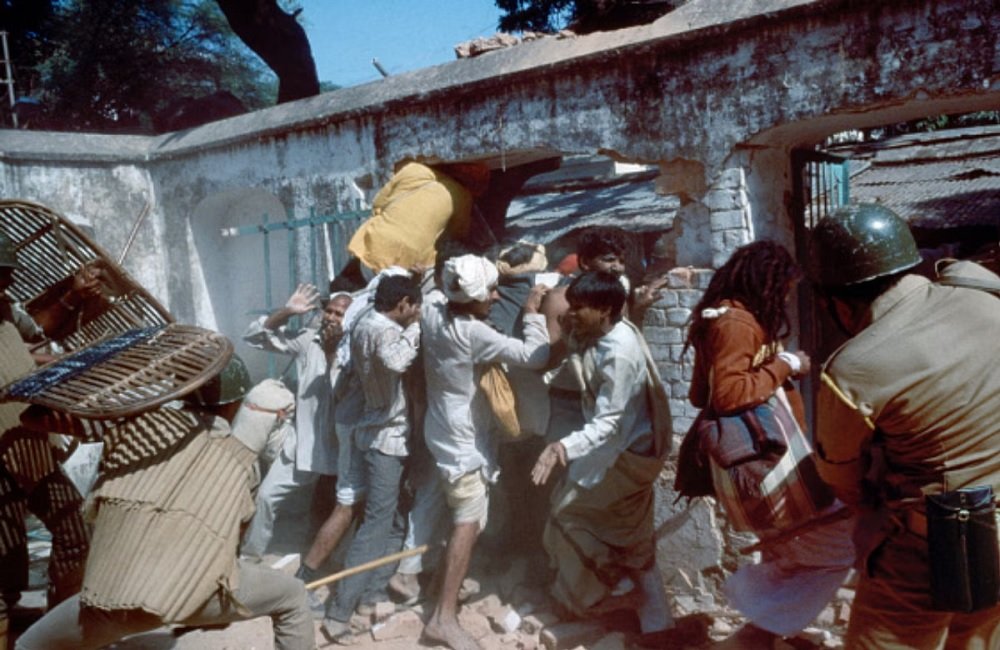
After the incident of November 2, 1990, when Kar Seva was called for again in 1992, the Ram devotees were obsessed with doing anything. Mohanlal Patel, who became a volunteer of Rashtriya Swayamsevak Sangh in 1981, came with Keshav Prasad Maurya (currently Deputy CM) to attend the meeting of Vishwa Hindu Parishad in Punjabi Dharamshala, Kydganj in 1989. After listening to the speech of Ashok Singhal, he became a full-time worker of VHP and at that time got the responsibility of minister of Dwaba organization (present day Kaushambi then Prayagraj). Mohanlal says, 'I still remember that on December 6, 1992, I got ready to go to Karseva. There is an atmosphere of fear in the mind about what will happen. So we went to the house to get photographs taken and wonder if there would be a bullet or what would happen, whether we would come back or not. Whatever happens there, at least there should be photos at home. Even today I remember that during the 1990 movement, Thakur Gurjan Singh used to tell us workers that tear gas shells would be fired by the police. On his request, we reached Ayodhya via Pratapgarh and Sultanpur by applying lime on our faces to avoid tear gas. In the words of Mohanlal - 'In 1991, a program was launched to plant saffron flag in every house. Prasad, which came like Akshat from Ayodhya, also had to be delivered to every home. When it came to hoisting the flag at every house, saffron cloth was not available anywhere in Prayagraj. Jeetram Aggarwal, the then Metropolitan Vice President of Vishwa Hindu Parishad and textile businessman, ordered so many trucks of clothes from Kanpur that there was shortage of saffron cloth in Kanpur. So much saffron cloth came to Prayagraj that it was distributed to the entire eastern Uttar Pradesh from here. At that time, Kidganj office was the center of Eastern Uttar Pradesh and the command of the office was in the hands of Thakur Gurjan Singh. Mohanlal tells that trains from South India used to come to Prayagraj. Acharya Giriraj Kishore, Omkar Bhave, Ramphal Jeete, Thakur Gurjan Singh etc. used to prepare the strategy to organize the kar sevaks and decide the way forward.
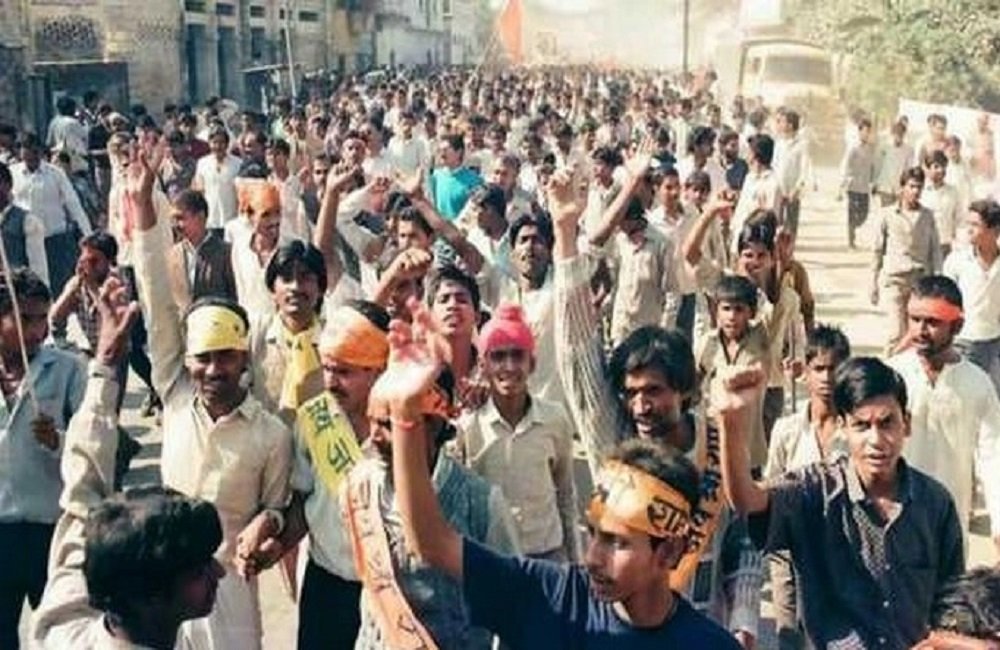
Prayagraj: Rajesh, who came to Prayagraj for studies from Puraila Chhitpalgarh Pratapgarh, was studying high school in GIC in those days. Bhulai's entire life lived in Teliarganj with his mother and brother. When the tax service started in 1990, he could not stop himself. He was greatly influenced by his grandmother's stories. She would often narrate the story of Shri Ram temple and cry that Ram Lala's temple was demolished hundreds of years ago. Meanwhile, he had also started visiting the Sangh's branches. When he got a chance to arrange food for Ram devotees during the movement, he showed great enthusiasm. Along with him, he also collected packets from other houses in the locality. Sometimes when the police stopped them, they would dodge them and run away. Meanwhile, when he came to know that a big group was going to Ayodhya with Swami Vasudevanand Saraswati, he also joined. Had gone home without informing. A fierce lathi charge and tear gas was fired on the Phaphamau bridge. Hundreds of people were arrested but Rajesh escaped and moved ahead on foot. He was also arrested on the border of Sultanpur Pratapgarh. He was kept in Kohdaur Inter College but when the crowd increased, people managed to escape from there by breaking the temporary jail. Rajesh was also included among them. Somehow he reached Ayodhya. There was lathi charge again in Hanumangarhi and he was seriously injured. In this sequence, Karseva in 1992 also participated. In 2002, when he reached Ayodhya for the darshan of Ram Lalla, he cried profusely after seeing the Lord in the tent. Today he is satisfied that the temple of God is ready. At present, along with teaching work in a school in Pratapgarh, he is discharging the responsibility of co-publicity head of the Sangh, Prayag North.